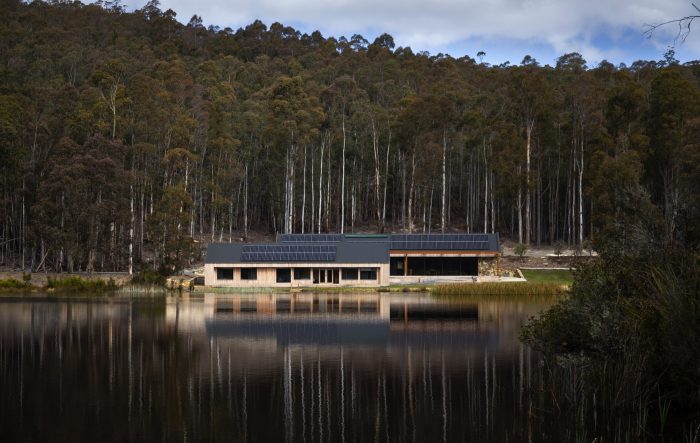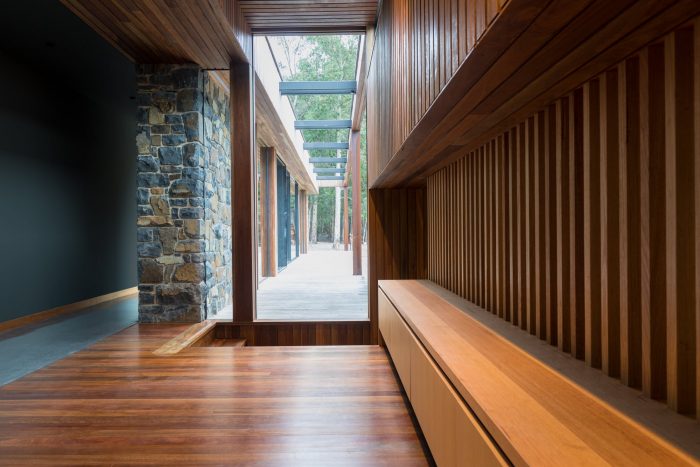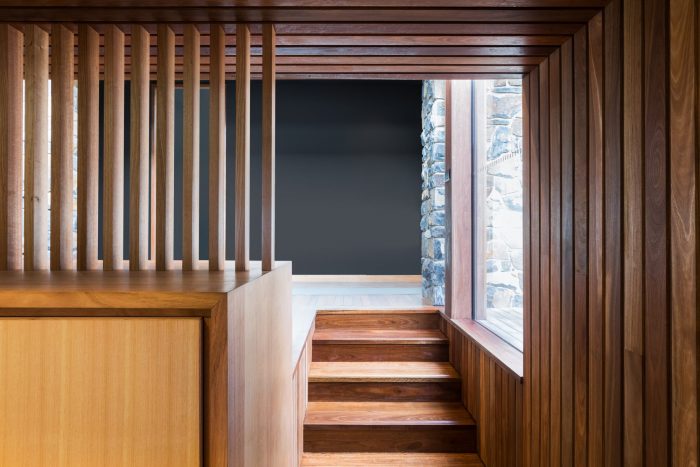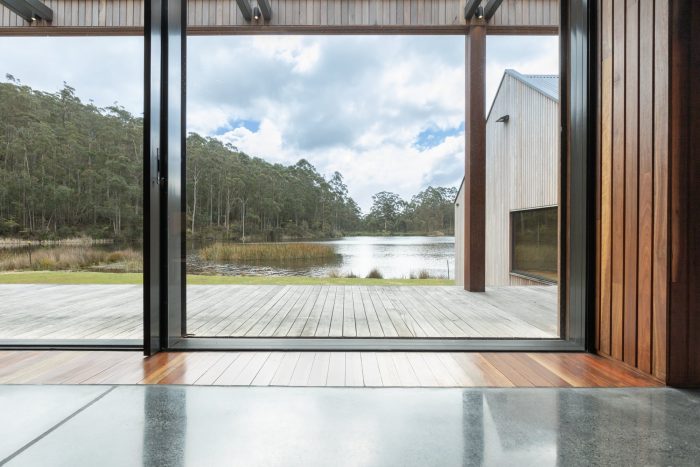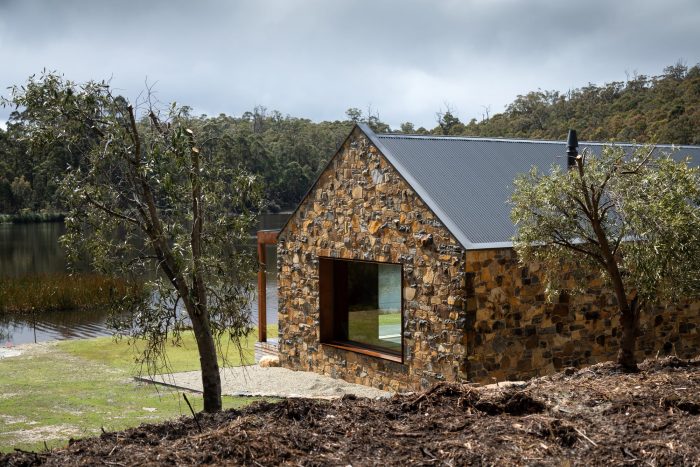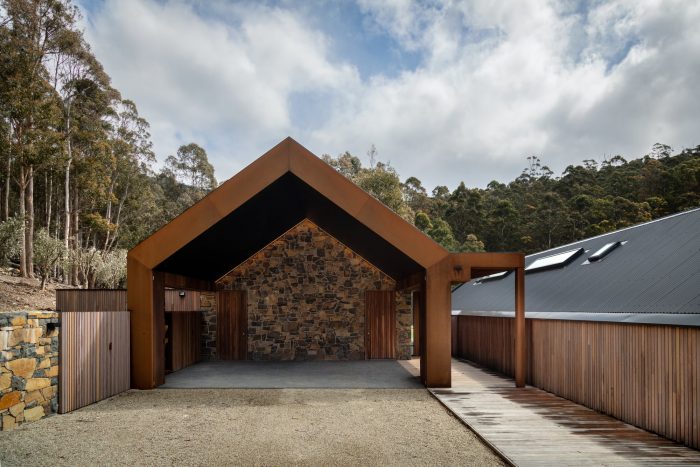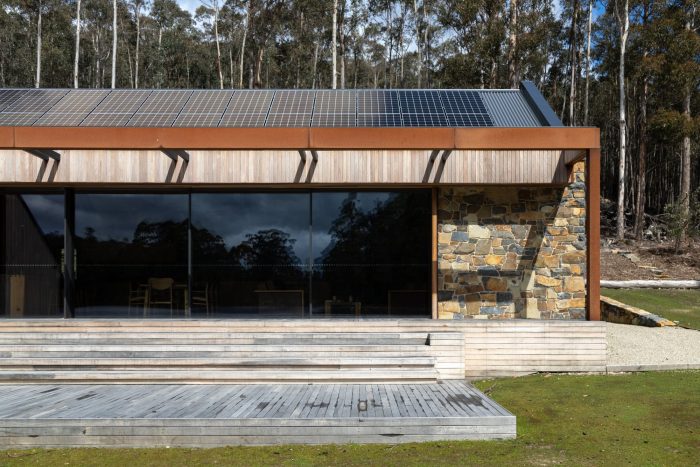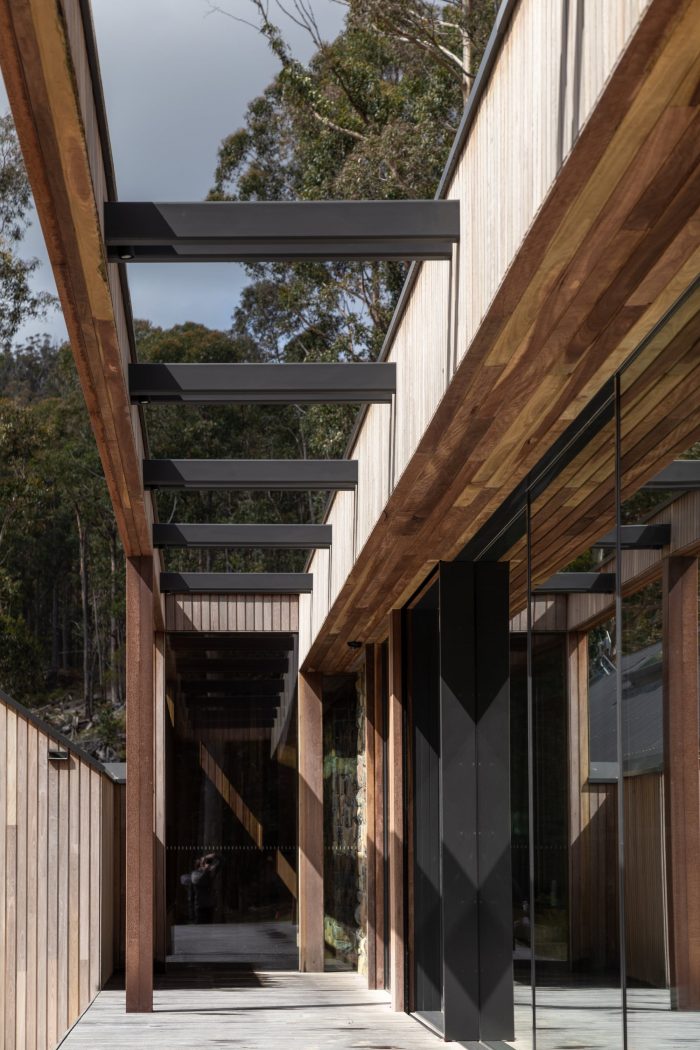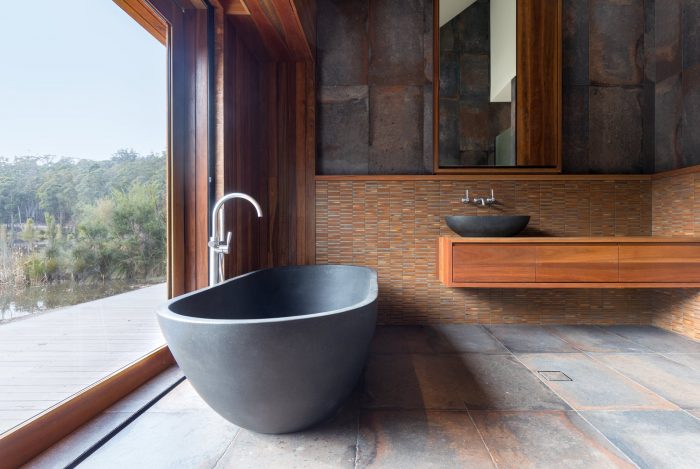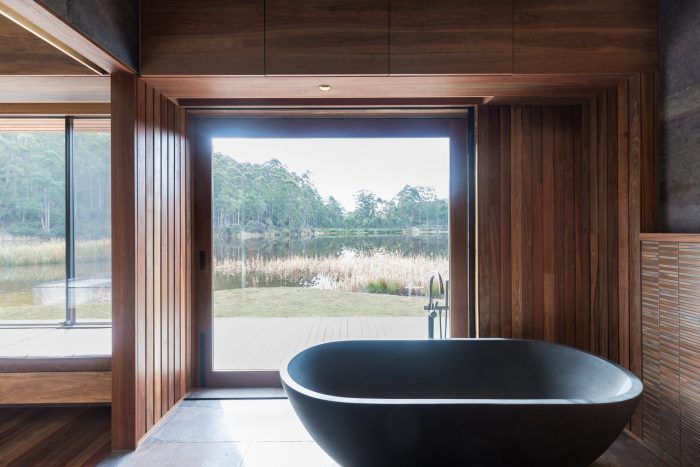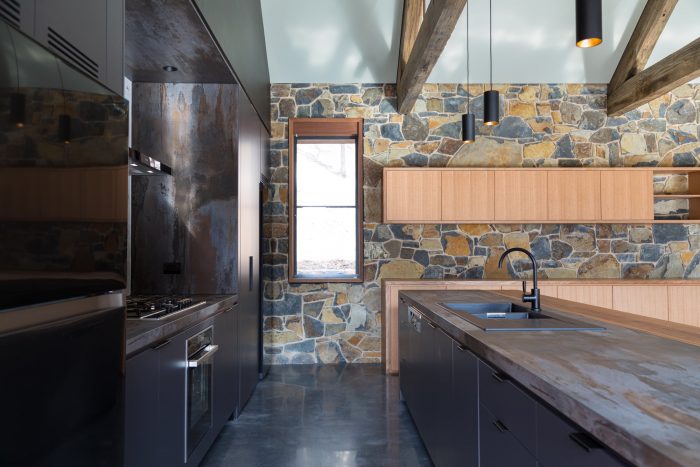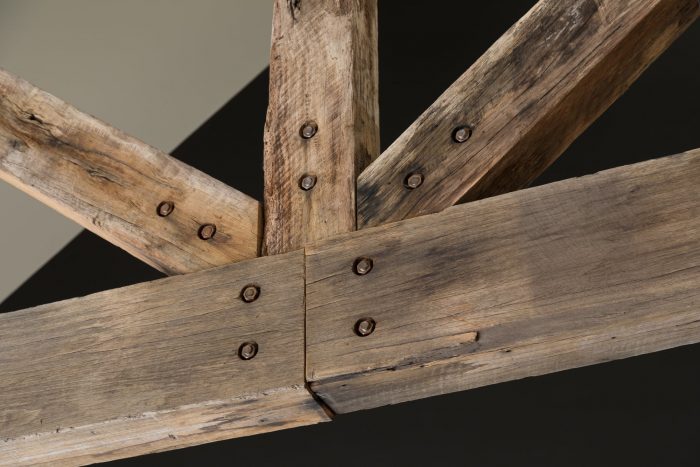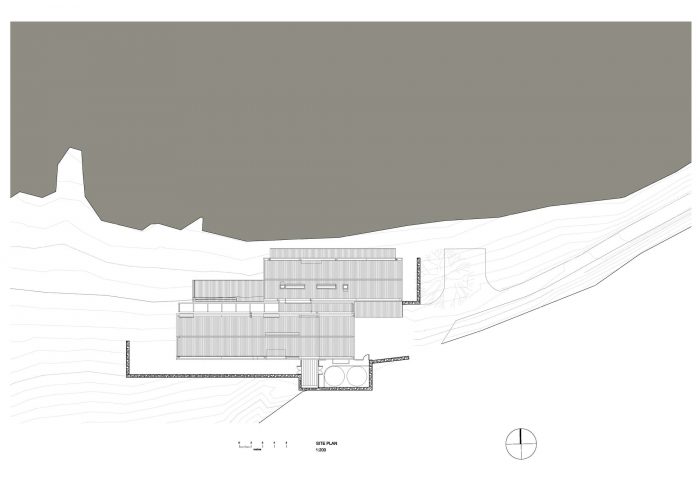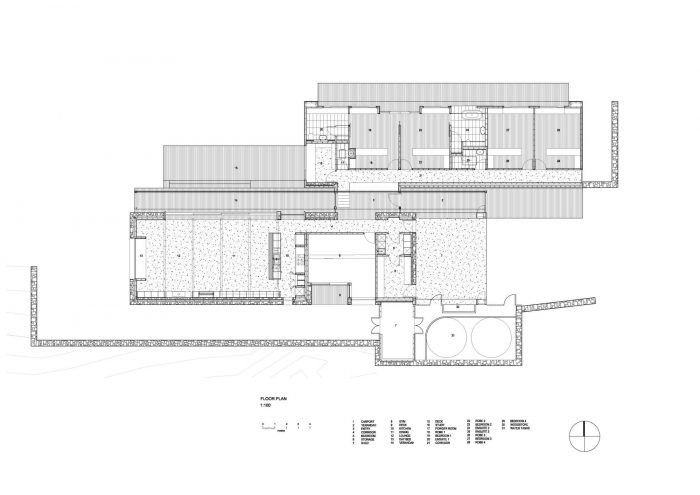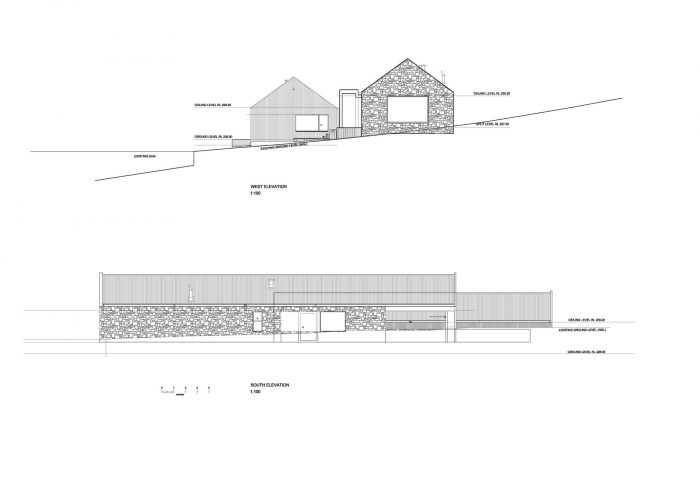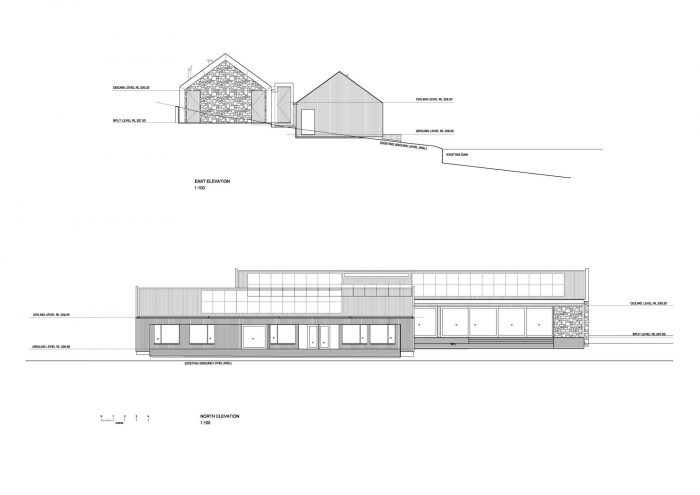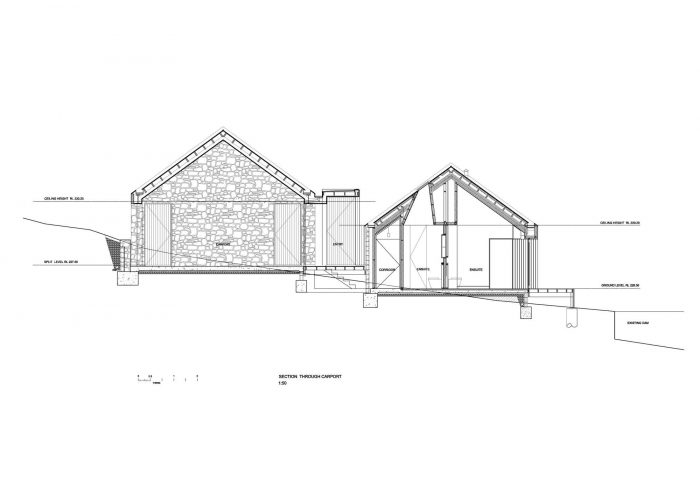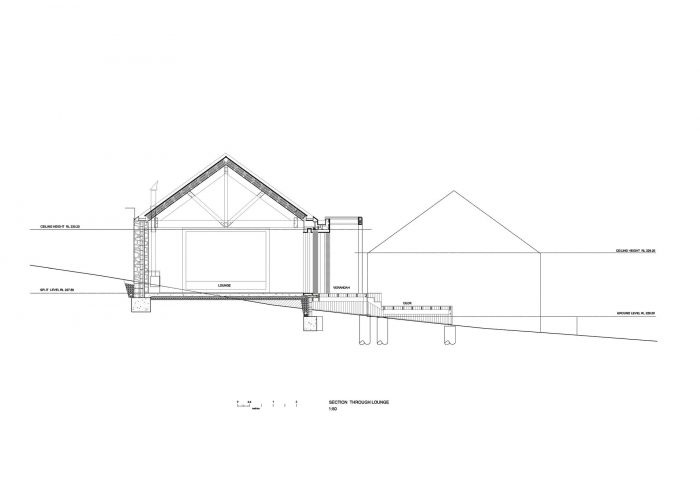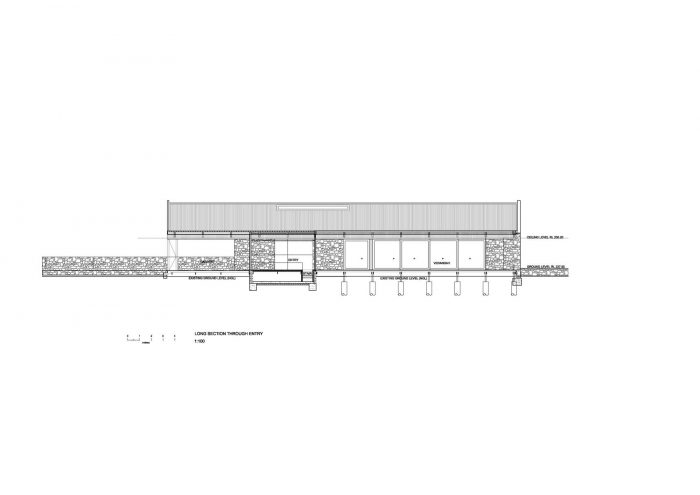桉树林立的露天剧场环境和位于场地最低点的湖泊模拟了一个舞台,为湖畔别墅提供了灵感。隐蔽而私密,房子的最佳位置是在湖边,朝向北方。根据场地和景观,房子的设计被概念化为两个独立的侧翼,沿着轮廓线定位,与入口处的长廊相连,一直延伸到生活翼,形成一个平台。 从房子里面看,窗户框住了一个强烈的美丽和宁静的景观。两翼与地面紧密相连,提供了通往外部的便利。
The eucalypt lined amphitheater setting and a lake at the lowest point of the site mimicking a stage, provided inspiration for the Lake House. Secluded and private, the optimal positioning of the house was at the lake’s edge, with a northern orientation. Responding to the site and views, the house design was conceptualized as two separate wings positioned along the contours, connected with an entry verandah that continues through to the Living Wing to form a deck. From inside the house, windows frame a landscape of intense beauty and serenity. The two wings have a close connection with the ground, providing easy access to the outside.
设计的驱动力是希望实现一个可持续发展的房子,创造自己的能量。利用被动式设计原则,最大限度地提高热增益,朝北的场地提供了机会。我想到了两个线性的形式,阳光充斥着大部分的房间。我们面临的挑战是如何顺应土地的轮廓,将建筑的两翼分成两层,并在场地上逐步形成梯形。这使走廊错落有致,并使卧室和生活空间更加紧密地联系起来。在卧室翼的南面,光线被盘旋在艺术天窗上方的桉树过滤,在生活翼的西面,日光床提供了对湖泊和灌木丛的一瞥。房子脚下的湖水也是地热泵的热源,水中的地环管为水力供暖系统提供能量。72块光伏电池板提供了足够的能量,将多余的能量释放回电网中。
The design was driven by a desire to achieve a sustainable house that created its own energy. Using passive design principles to maximise the heat gain, the north facing site provided opportunities. Two linear forms with sun flooding the majority of the rooms, came to mind. The challenge was to follow the contours of the land thereby splitting the building wings into two levels, by stepping the forms down the site. This staggered the corridor and more intimately connected the bedrooms and living spaces. To the south in the Bedroom Wing, the light is filtered by eucalypts hovering above artful skylights and to the west in the Living Wing, the daybed provides glimpses of the lake and the bush beyond. The lake at the foot of the house is also the source of heat used by the geothermal heat pump with ground loop pipes in the water to supply energy for the hydronic heating system. Seventy-two photovoltaic panels provide enough energy to release excess back into the grid.
材料的选择参考了农村的环境,它适合于农舍建筑:使用了当地的石头、木材和Corten的组合。两个谷仓类型的材料选择,一个是石头,另一个是木材,也是用来划分公共和私人空间的。石头和回收的桁架创造了一种永久性的感觉,以及一种类似于公共建筑的宏伟感,以表明更多的公共生活空间。卧室翼在本质上是一个靠近水面的木制建筑,类似于一个船舱,但表示一个更私人的亲密空间。石材是手工选择的,以纳入更多的黄色色调的青石。斑桉树是灰色的,以反映桉树树干并满足丛林防火的要求。
The material choice was informed by the rural setting which lent itself to farmhouse architecture: a combination of local stone, timber and Corten was used. The material choice for the two barn type forms, one stone and the other timber was also used to delineate the public and private spaces. The stone and recycled trusses create a feeling of permanency and a grandness akin to a public building to indicate the more public living spaces. The Bedroom Wing is humble in nature being a timber building closer to the water, comparable to a boatshed, but denoting a more private intimate space. The stone was hand selected to incorporate more yellowy tones of bluestone. The spotted gum was to grey off, to reflect the eucalypt trunks and meet bushfire requirements.
科腾钢让我们想起了农场建筑中生锈的钢铁,而且还具有低维护性的额外好处。协作设计的特色回收木材桁架,位于开放的生活区,是在现场外预制的,先制作原型,以确保准确的配合。定制的细木工制品主要是用木材制作的,松散的家具由当地工匠制作。该建筑的成功依赖于熟练的工匠和建筑商的共同努力,使该建筑所需的细节得到了很好的解决。设计成果的价值体现在建筑的可持续发展性质,以及它在水和能源方面的自给自足能力,对火灾和进水的抵抗力,同时允许外部和内部之间的温和共存。
The Corten reminds us of rusty steel in farm buildings also with the added bonus of being low maintenance. The featured recycled timber trusses designed collaboratively, situated in the open plan living area, were prefabricated off site with prototypes built first to ensure an accurate fit. The bespoke joinery was mainly built in timber, with loose furniture made by a local craftsman. The success of the build relied on skilled craftspeople and builders coming together allowing for a good resolution of detailing required for this build. The value of the design outcome is evident in the sustainable nature of the building and its ability to be self-sufficient with water and energy, resilient to fire and water ingress, while allowing a gentle coexistence between the external and internal.
Architects: Biotope Architecture + Interiors
Area : 390 m²
Year : 2019
Photographs :Peter Mathew
Manufacturers : Abey, Brodware, Cerdomus, Miele, Neff, Studio Bagno, Artedomus, AustView, Bespoke, Casa Monde, Delft Tiles, Natural Stone Bath Factory, Samsung, Schuco, Tile.Expert, Timothy Oulton, Urban Lighting, Woodpecker
Lead Architect : Rosa Douramanis
Builders : Jackman Builders, Russell & Derek Chambers
Planner : Emma Riley & Associates, Clare Hester
Environmental Consultant : Envirodynamics, Andrew Welling
Engineer : JSA Consulting Engineers, Matthew Horsham
Traffic Engineer : Milan Prodanovic
Loose Furniture : Spaceman, Benton Van Dorsslaer
Wood Supplier : Architectrual Reclaimed Timber, Joe Holmes
Stonemason : Alastair Houston
Building Surveyor : Pitt & Sherry, David Morey
City : Hobart
Country : Australia


